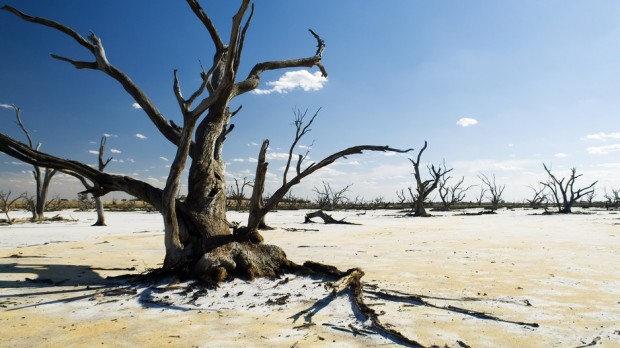
After Cancun: Facing up to Climate Change
09.12.2010
.“Climate change is not a matter belonging to the distant future; the impact is already a reality”
Climate change is a multifaceted and complex matter setting as many agendas as there are nations. A globally coordinated mitigation effort has failed, and political attention must now embrace the immediate need to adapt. Only by facing up to the challenges of climate change today can we contemplate a safer journey towards the future. The aim of this article is to highlight simple solutions to an abstract problem, where international consensus is no prerequisite.
Peter Utzon Berg og Andreas Hastrup Clemmensen
Setting the stage
Key agencies and world leaders are gathered in Cancun to build on last year’s non-binding political agreement laid out by COP15 in Copenhagen. Unlike the highly ambitious goals of last year’s summit, the Mexican hosts hope for a more tangible outcome, and have therefore set an agenda with comparatively low aspirations. The emphasis has shifted from a global convergence on emission-cuts to a more pragmatic approach, focusing on areas that deal with anthropogenic-specific climate change such as forestry, and technology transfer. Until recently, international policy-making has evolved around mitigating the adverse effects of climate change by cutting CO2 emissions, rather than addressing the immediate short-term impacts through adaptation.
Climate change is not a matter belonging to the distant future; the impact is already a reality, adding an increasing stress to the world’s most vulnerable regions. The newly published report, Climate Vulnerability Monitor 2010 – The State of the Climate Crisis, released on 3. December by DARA International, puts the immediate human impact of climate change on the agenda, and seeks to catalogue specific adaptation measures on meeting these effects. Specifically, the report estimates the climate change effects in 2010 and 2030 and lists feasible and cost-efficient solutions to those challenges.
The untold story
The 2010 Pakistan floods and wildfires of Central Russia, along with the image of melting ice caps and rising seas, represent the morbid textbook images of climate change. Without neglecting the relevance of such examples, the consequences of climate change go deeper and hold greater complexity than what is implied by such standard representations. A few examples should illustrate this point.
The most obvious and understated effect is that of decreased heating costs. Global green house gas emissions significantly increases the general temperature of the surface of the earth, causing not only reduced heating bills, but also more indirectly an expected decrease in cold-driven mortality rates. Equivalently the negative impacts, in the form of higher costs and heat-driven mortality rates, will be felt in regions that already suffer from extreme heat, signifying an uneven distribution of benefits and losses.
A second and maybe more ambiguous issue, has to do with melting ice around the North Pole, allowing greater access to polar waters. Besides the immediate global gain of lower transportation costs, which typically have positive consequences for powerful western economies, this will also expose some of the world’s last reserves of fossil fuels, which unambiguously will cause environmental havoc and prolong the period of fossil fuel dependence in the region.
A more subtle aspect relates to the effect on fishery. Recent research points to a dramatic redistribution of maximum catch potential in different parts of the world, where colder, deeper waters are expected to see increasing aquatic stocks due to more favorable biological conditions. Thus high-latitude regions are estimated to see a 50% increase by 2055, while tropical regions are projected to experience a drop of up to 40% in their maximum catch potential.
Overall the impacts of climate change are both imminent and highly disproportional with respect to vulnerability. Sideling this with the adverse distribution of global power it is of no great surprise that the negotiating partners in Cancun show a more tangible and less grandiose approach.
Adapting to the near future
In an age where we have vast sums of knowledge on how to increase resilience to climate change, the question remains which methods are going to be most cost-effective and readily available to vulnerable communities? Even though a lot of the adaptation will end up being done by private corporations there is an obvious role to be played by grassroot organisations and governmental institutions by providing public goods where collective action is necessary.
Examples of feasible and cost-effective climate change adaptations coming out of recent research include; early warning systems, school health and nutrition programmes, and rainwater harvesting.
Early warning systems have wide co-benefits for local communities as they serve to demystify some of the uncertainty about immediate weather patterns. This will benefit not only subsistence farmers, but also help save lives. These systems are highly relevant for low-income countries, since more than 90% of natural disaster-related deaths occur in these countries.
Today, 80% of all climate related deaths are registered among children living in South-Asia or Sub-Saharan Africa. Climate change means more food insecurity and hunger. Malnutrition is not only a matter of physical impairment but also affects the ability to learn among children.
School health and nutrition programmes are highly cost-effective and have an impressive track record, along with notable co-benefits, as it creates an incentive for children to attend school. Evidence shows that the number of children reaching school age (defined as 5 to 14 years of age) is increasing due to child survival programs.
A consequence of a change in precipitation patterns is increasing water stress for both farmers and rural populations. Rainwater harvesting is a simple technique, where rainwater is collected, treated, and stored as a supplement to conventional water supply programmes. Among significant benefits are an increase in farmer income, and improved food security and health due to safe drinking water. Rainwater harvesting may also help control erosion and flooding during periods of excessive rainfall.
While Climate change is fact, the evidence of its exact impact is unclear. But we have enough indications to show that widespread harm is already taking place all over the world. These basic examples of adaptation programmes are by no means meant as the complete answer to all climate challenges, but merely serve as examples of the simple actions required to face climate change. Governments, private agents, and NGOs all play important roles if adaptation is to be recognized publicly in the same way mitigation has over the recent decades. Public recognition of the immediate challenges to anthropogenic climate change is essential if political change is to be brought about.
Instead of focusing only on distant climate change mitigating targets, attention should also be paid to the current adverse effects of climate change and the simple ways of coping with it. Where the impacts of climate change are most acute, adaptation will invariably have to be our main focus.
Ultimately, there is no excuse for inaction.
Peter Utzon Berg has contributed to the Climate Vulnerability Monitor report through his work at Commons Consultants. He is a master’s student at the Department of Economics, University of Copenhagen.
Andreas Hastrup Clemmensen has contributed to the Climate Vulnerability Monitor report through his work at Commons Consultants. He is a master’s student at Global Studies, Roskilde University and has previously worked with disaster risk reduction and climate change adaptation at WFP and IFAD.











![Kampen om magten: “En meget berigende politisk bog […] Anbefales til indkøb”](https://d.raeson.dk/wp-content/uploads/2020/02/usa.trump_-300x274.jpg)




